Mastering the Art of Cleaning Blinds in a Tub
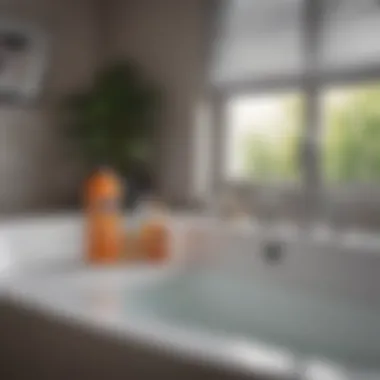
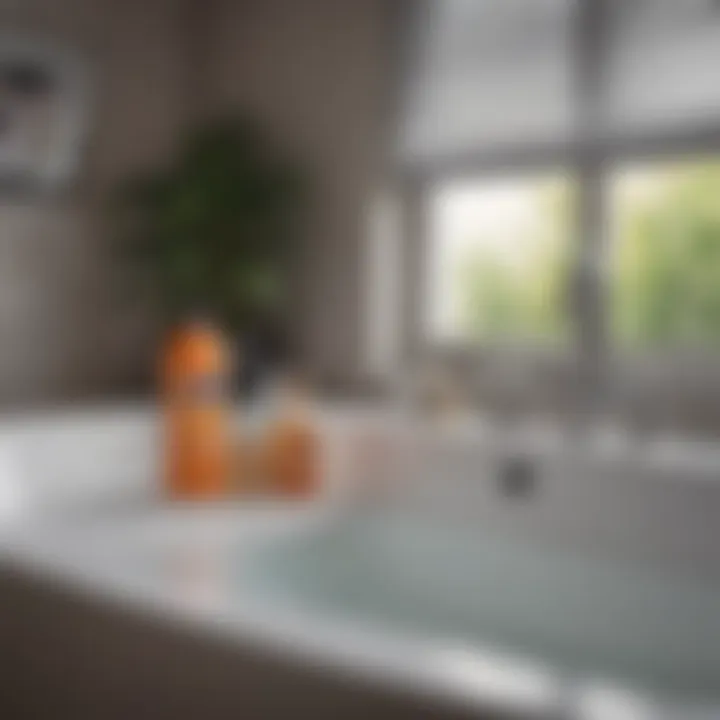
Intro
Cleaning blinds can seem like an effortless task. Yet, it can become significantly complicated as dirt and grime accumulate over time. Using a bathtub for this chore offers a smart approach, integrating water and effective cleaning solutions tailored to your blinds. Understanding the best cleaning methods and preparation steps yields impressive results and easier maintenance of your blinds. This guide will introduce the necessary materials and approaches to help in achieving spotless blinds.
Inspiring Homes
Inspiring home environments evoke comfort and peace. The cleanliness of a home contributes significantly to its overall aesthetic and ambiance. For many homeowners, having clean blinds may seem trivial. However, blinds can elevate the atmosphere of a room when well-maintained.
- Clean blinds reflect care and attention to detail in one’s home. This translates well into the luxurious yet cozy feeling that many wish to cultivate, irrespective if it's for a spacious villa or a small, charming cottage. Moreover, with different styles available—such as wooden, vinyl, or fabric—regular cleaning helps to preserve these materials, giving them longevity.
Preparation for Cleaning
Successful cleaning lies in preparation. Before proceeding to directly clean blinds in a tub, ensure you have all materials ready. This typically includes the following:
- Clean Water
- Gentle Dish Soap or Vinegar
- Soft Cloths or Sponges
- Cleaning Gloves
- A Step Stool (if required)
Ensure to choose a suitable cleaning solution based on the blind material type. For example, fabric blinds may benefit greatly from vinegar, which cleans without damaging the fabric.
Cleaning Methods
The cleaning methods vary between different blinds types. It is essential to approach each material correctly:
Wooden Blinds
- Fill the Tub: Start by running warm water in the tub, mixing in gentle soap.
- Remove the Blinds: Carefully take them down from their brackets.
- Soak: Place the wooden slats in the water for several minutes to allow the soap to penetrate dirt and grime.
- Scrub Gently: An essential step here as wood can easily be damaged. Use a soft sponge without scratching the surface.
- Rinse and Dry: After washing, rinse thoroughly and air dry off outside of the tub.
Vinyl or Faux Wood Blinds
- Similar to wooden blinds, soak them in the soapy water. Normal rinsing will suffice for vinyl as it is commonly resistant to water.
Fabric Blinds
- Fabric come with its own care methods. Use cold water solutions to Google to keep the fibers from distorting. Always refer to care labels for specific instructions about the right care approach.
Post-Cleaning Maintenance
After cleaning, maintaining the blinds to prevent dust buildup is critical. Regularly dust blinds, ideally bi-weekly, prevents the unattractive accumulation of dirt. Additionally, consider adjusting the angle of your blinds when not in use. This simple response minimizes exposure to debris in your home.
Key Takeaway: Employing proactive maintenance routines can significantly reduce subsequent cleaning efforts.
Preamble to Cleaning Blinds
Cleaning blinds is often overlooked in household chores. Many people do not realize the significance of maintaining their blinds until they become noticeably dirty or dusty. Regular cleaning is not just about aesthetics; it impacts the overall environment of a home. Blind accumulations of dust and allergens can diminish air quality, particularly in spaces like bedrooms and living rooms. Hence, maintaining clean blinds is paramount for promoting hygiene, enhancing the welcoming ambiance of living areas, and ensuring longevity of the blinds themselves.
Importance of Clean Blinds
Clean blinds contribute to a healthier indoor atmosphere. They act as barriers against dust, pollen, and other allergens that may enter your living spaces. Dusty blinds can recirculate these particles every time they are moved, worsening asthma or allergy conditions among residents.
Additionally, the appearance of a home is enhanced by clean blinds. They can govern how light filters into a room, providing functionality along with style. Dirty and dingy blinds detract from a well-maintained home, thus potentially reducing property value in the eyes of potential buyers or renters.
Moreover, scheduled cleaning promotes better longevity of the blinds themselves. Various materials such as vinyl, wood, or fabric react differently to dust and dirt. Regular attention keeps them in good shape, preventing deterioration over time.
Common Types of Blinds
Understanding your particular type of blinds helps in determining the proper cleaning method. Here are some common varieties:
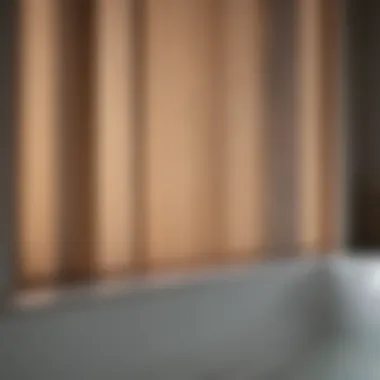
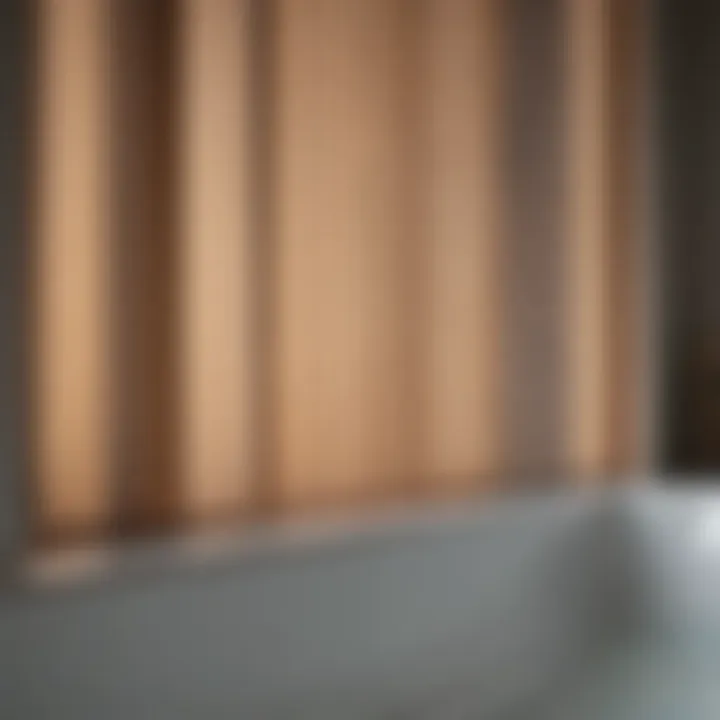
- Vertical Blinds: Often used in large spaces, they allow effortless adjustments for privacy and sunlight control. They are typically made of vinyl or fabric, making them easy to clean once taken down.
- Concern Blinds: Known for their contemporary look, they provide excellent light control and come in various colors and patterns, enhancing any room décor.
- Wooden Blinds: These add a luxurious feel and require careful cleaning with gentle methods to avoid damage to the natural finish.
- Venetian Blinds: Equipped with horizontal slats, they can trap dirt and dust easily and need regular cleaning to maintain their classic appearance.
Each type of blind has specific cleaning requirements, which warrants further exploration in subsequent sections of this guide. Managing these specifications will prove critical for achieving the best results when cleaning. As readers dive deeper, they will uncover many essential tips to effectively clean each type of blind, ensuring excellence in home maintenance.
Why Use a Bathtub for Cleaning Blinds
Cleaning blinds is often a neglected task, yet significant for a well-maintained home. The bathtub represents a practical space for this undertaking. Understanding the purpose of using a bathtub specifically delves into both the benefits and how it stands against various cleaning methods.
Benefits of Tub Cleaning
Using a bathtub for cleaning blinds offers several advantages:
- Space Efficiency: The vast area in a bathtub provides ample space to lay out blinds comfortably. You have room to maneuver without worrying about external messes.
- Water Usage: Immersing blinds in a tub allows thorough soaking. This makes it easier to break down dust and dirt, potentially achieving better results with less concern for damage.
- Convenience: The faucet enables continuous water flow; you can easily rinse, soak, and wash your blinds all in one place. This streamlines the entire cleaning process.
- Control Over Cleaning Solutions: In a tub, you have control over the cleaning agents used, making it simple to customize to the material of your blinds.
Cleaning blinds in a tub can be less hassle than dragging items back and forth to a sink or using less suitable locations.
Comparison with Other Cleaning Methods
When considering how to clean blinds effectively, comparing methods clarifies the utility of using a bathtub:
- Kitchen Sink: A sink generally lacks the area to handle multiple blinds, and often has limited water depth for soaking.
- Vacuum and Duster Methods: These methods can remove surface dust, but often fail to address deeper grime. A tub allows soaking and scrubbing, enhancing cleanliness.
- Steam Cleaners: While steam cleaning can disinfect, it may be damaging to heat-sensitive materials. The tub method is safer for various types of blinds.
Overall, using a bathtub to clean blinds is an effective alternative to methods that lack efficiency and control.
Key Insight: A bathtub simplifies the process, ensuring more effective and thorough cleaning without the need for excessive movement or multiple surfaces.
By acknowledging these elements, it's clear why a bathtub can serve as a preferred method in your blinds cleaning routine. In the following sections, we will explore the necessary materials, detailed preparation, and the actual step-by-step process, to ensure you gain maximum results from this method.
Necessary Materials for Cleaning Blinds in a Tub
Cleaning blinds effectively requires the proper materials. The choice of supplies can impact the overall success of the cleaning process. Each item serves a specific purpose and contributes to creating optimal conditions for effective cleaning. Using high-quality materials not only stretches the lifespan of your blinds but also ensures a satisfactory clean.
Essential Cleaning Supplies
When it comes to cleaning blinds, having the right tools is essential. Here is a brief overview of the essential supplies:
- Bucket: A simple bucket is necessary to hold the cleaning solution and submerge smaller blinds.
- Soft Cloths or Microfiber Towels: Important for wiping down surfaces without scratching them.
- Sponge: Aid in scrubbing the blinds without damaging their materials.
- Brushes: A small brush, ideally with soft bristles, can be effective for reaching tightly spaced slats.
- Rubber Gloves: PPE is always an advisable choice when working with cleaning solutions.
Each of these items ensures that your cleaning process is both efficient and safe for the delicate materials blinds are often made of.
Recommended Cleaning Solutions
Selecting a cleaning solution is crucial. Certain materials can respond better to specific types of cleaner. Here are some recommendations:
- Mild Dish Soap: A basic soap is excellent for general cleaning. Mix a small amount in warm water for an effective solution.
- Vinegar and Water: Create a solution of equal parts vinegar and water. This can tackle grease and grime without being too harsh.
- Baking Soda: A sprinkle of baking soda mixed with water can help in treating tough stains.
- Commercial Products: Brands like Krud Kutter offer cleaning solutions specifically designed for blinds.
Using suitable cleaning solutions gives better results while avoiding the damage harsh chemicals can bring. Always consider the material of your blinds when selecting these solutions.
Preparation Steps Before Cleaning
Cleaning blinds is not simply about the technique used; preparation plays a crucial role in ensuring effective results. Proper preparation saves time and enhances the efficiency of the cleaning process. It creates a structured environment that minimizes potential distractions and prevents damage to the blinds.
Adequate preparation involves gathering all material needed and carefully removing the blinds from their fixtures. This step is essential in maintaining the integrity of the blinds during cleaning. Furthermore, setting up the cleaning area in a bathtub allows for a more controlled environment, effectively containing any mess while also providing the necessary space to work. Let us dive deeper into the individual steps needed to prepare for cleaning blinds thoroughly.
Removing Blinds from Fixtures
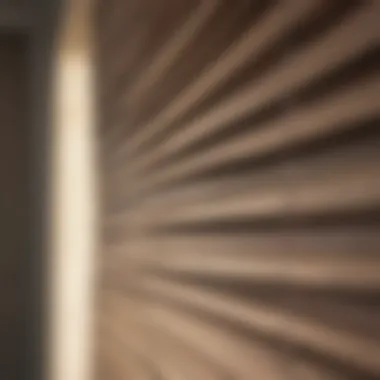
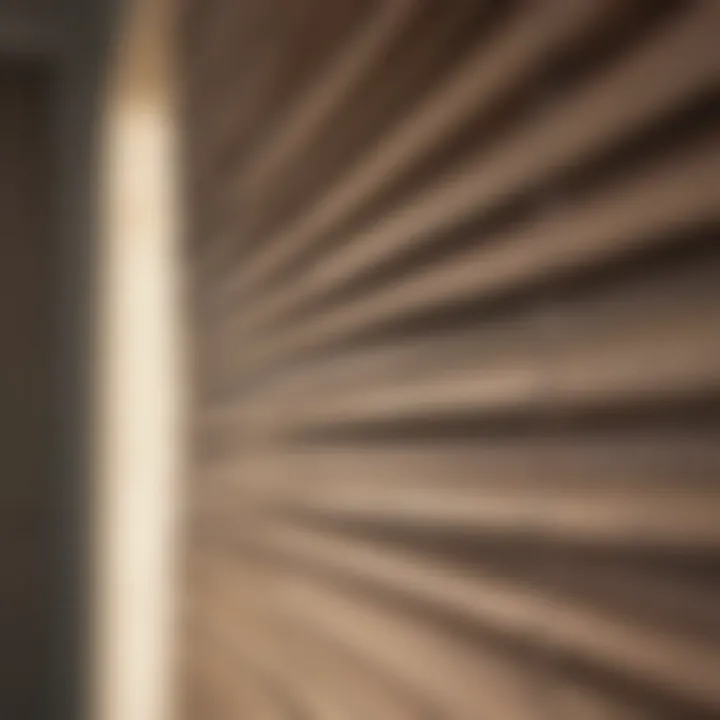
Before you start cleaning, carefully removing the blinds from their fixtures is important. Start by ensuring the area around your curtains or blinds is clear to allow for smooth movement. Use a ladder, if necessary, so you can safely reach the top fixtures.
- Identify Mounting Type: Different blinds might use different installation types, such as brackets, clips, or screws. Familiarize yourself with them to avoid damaging the blinds during removal.
- Careful Detachment: If your blinds are connected by brackets, gently squeeze or lift them to free the blinds. For screw types, use a screwdriver, ensuring that you do not strip the screws.
- Compatibility Check: As you remove your blinds, note their compatibility. This will be helpful when reinstalling them later.
This process requires mindfulness to not scratch, bent, or break the blinds as they are released from their mountings.
Setting Up the Bathtub
Preparing the bathtub for cleaning blinds enhances the process overall. A clean and well-prepared bathtub acts as a suitable surface for washing the blinds.
- Clean the Bathtub: Before placing the blinds inside the tub, ensure it is free from any residues and debris. A thorough rinse will do enough to prepare the space.
- Warm Water Filling: Fill the bathtub with warm water, not hot, as extreme heat can damage some materials.
- Add Cleaning Solutions: Once the water is ready, incorporate the recommended cleaning solution, which ensures a more effective clean. Aim for a mixture that targets grime while being safe for the blind material.
Creating a spacious, hazard-free environment in your bathtub can significantly impact the efficiency of your cleaning session. An organized approach leads to more success in tackling dirt and stains on your blinds.
Step-by-Step Guide to Cleaning Blinds in a Tub
Cleaning your blinds may seem like a trivial task, but it is essential for both the aesthetics and hygiene of your living space. If you have not considered using your bathtub for this task yet, it's time to change that. This guide provides practical steps for optimizing the cleaning process to achieve the best results. There are benefits to each step, from preparing to soaking and scrubbing, to ensuring the blinds are thoroughly rinsed and dried. With the right approach, you can keep your blinds looking new while maintaining an inviting atmosphere in your home.
Soaking the Blinds
To start the cleaning process, soaking the blinds is a crucial step. Soaking helps to loosen dirt and grime that accumulate over time. To do this, fill your bathtub with warm water. Be careful not to overheat it, as some materials may become damaged with excessive heat. Add a gentle cleaning solution to the warm water. You can use something mild like dish soap. Ensure the solution is well mixed to avoid greasy residue.
Once everything is set, place the blinds in the tub, allowing them to submerge. It may be beneficial to hang them over the side of the tub or lay them flat, depending on their type. For thicker and wider blinds, consider doing this in sections, managing your time effectively while ensuring even exposure to the soaking solution. Let them soak for about 15 to 20 minutes. This time allows dirt to soften without damaging the materials, making the subsequent scrubbing more effective.
Scrubbing Techniques for Various Materials
After soaking, the next phase involves scrubbing. It is essential to adjust your scrubbing method based on the material of your blinds.
- For wooden blinds, use a soft brush or cloth to avoid damage. The aim is to gently remove dirt without scratching the surface. A natural finish needs extra care, perhaps with a solution specifically formulated for wood.
- Vinyl and faux wood blinds allow for slightly more aggression in scrubbing. A medium-bristle brush can be utilized, especially for getting into the grooves. Pair this with a vinegar-based cleaner for best results.
- Aluminum blinds should be handled similarly to vinyl, keeping away from harsh abrasives. A microfiber cloth works effectively to lift off accumulated grime. Be cautious around stabilizer strands, as they can sometimes be delicate.
Regardless of the material, ensure comprehensive coverage, including narrower slats and areas that may not be immediately visible.
Rinsing and Drying Methodology
The final step of the process involves rinsing the blinds adequately. Once you have scrubbed all areas, it is crucial to remove any cleaning residue, as leftover soap can attract more dust once the blinds are reinstalled. Rinsing can also be done in the tub by gently running warm water over them, or you may opt to take them outdoors.
Make sure the water circulates evenly over the blinds. After rinsing, gently shake off excess water to make the drying process simpler.
Allow the blinds to dry vertically. If left flat, they may take longer to dry, leading to mold formation, thus ruining all the effort placed into cleaning them. Ensure there is proper airflow. If you can, take every opportunity to dry them outside, where sunlight can aid in the drying process, and also keep bacteria at bay.
Remember: Taking your time at each step is essential. Rushing through may lead to unintended damage or insufficient cleaning.
Following these methodical steps turns an ordinary chore into a more efficient and thorough process. This careful approach is how you can ensure your blinds keep enhancing your home environment.
Post-Cleaning Maintenance Tips
Keeping your blinds clean is a rewarding chore that enhances the overall ambiance of your home. However, this effort can be diminished if proper post-cleaning maintenance is ignored. There are specific actions that you should consider to extend the longevity of your blinds. These actions are not just about cleanliness. They also play a significant role for the aesthetics and personal comfort in your environment.
Reinstalling the Blinds
After cleaning, you will reinstall the blinds. Be certain to approach this process with care. Ensure that they are completely dry before putting them back up in place. Moisture can lead to new dirt attracting. Check the brackets and fastening mechanisms as hung improperly can lead to accentuated wear and tear.
To reinstall blinds:
- Check your Installation Manual: Have it on hand to ensure each step is executed correctly.
- Align the Blinds Uniformly: Start from one end and make your way to the other to avoid frustrating misalignment.
- Tighten Fixtures Securely: This prevents unwanted sagging or loosening of the blinds.
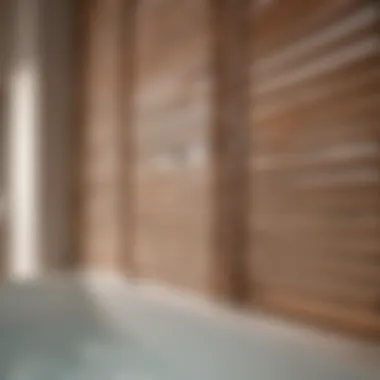
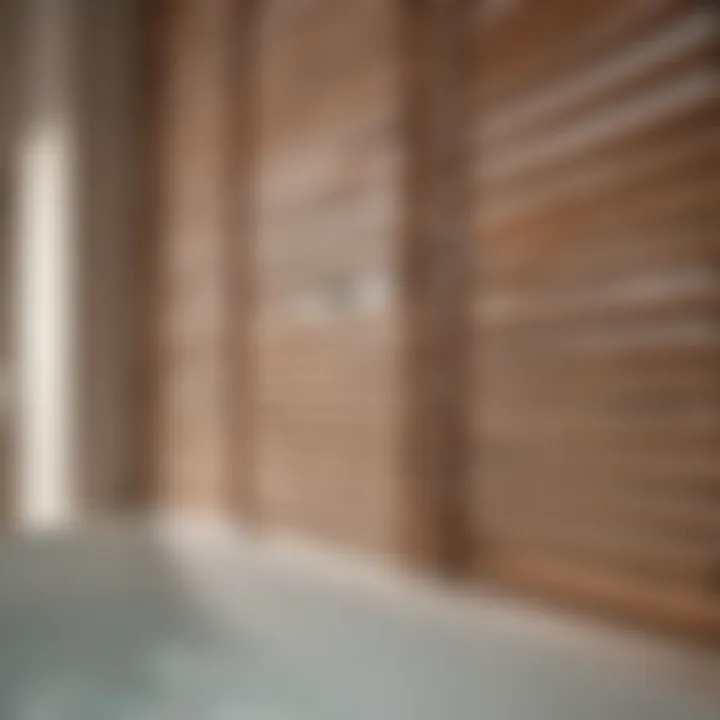
These measured considerations will help you retain the refined look and functionality of your blinds for a longer duration.
Routine Care to Prevent Future Dirt Accumulation
The maintenance of blinds shouldn't be merely examined after a major cleaning task is performed. It must often be addressed to prevent tedious labor periodically. Regularly dusting the blinds goes far in reducing accumulated grime, while proactive steps can help that they don't gather significant dirt.
Consider the following routine care:
- Use a Microfiber Cloth Weekly: Wipe down surfaces to eliminate dust without causing scratches.
- Limit Sun Exposure: Open and close your blinds judiciously to reduce direct sunlight damage or fading.
- Apply a Protectant: In the case of vinyl or wood blinds, consider a protectant that helps to repel future stains or contaminants.
Adopting these habits can create longer intervals between cleaning. More importantly, they also save you from potentially irreversible damages to blinds.
“Routine care not only prolongs the life of your blinds but also consistently enhances your interior aesthetics.”
Addressing Common Issues During Cleaning
Cleaning blinds in a bathtub can be confusing. Sometimes, certain difficulties might arise during this process. Understanding these common issues ensures a more efficient and smoother experience. It can save time, enhance cleaning results, and help to preserve the quality of the blinds.
Dealing with Stubborn Stains
Stains on blinds can be quite frustrating. They often come from factors like dust, grease, or longer-lasting dirt accumulations.
Use soft brushes or sponges for gentle scrubbing. • Some solutions that are more effective than standard soapy water might be necessary. Dish soap, vinegar, or baking soda, colloquially known as baking powder, are helpful. • For hardwood or vinyl blinds, a bit of olive oil can make a difference for surface blemishes. • If a stain persists, do not use abrasive pads. These could scratch or damage the surface.
Following these tips should give keen results. Always test any new solution on a small inconspicuous area first.
Handling Different Types of Blinds
Not all blinds are the same, and knowing a few specifics helps in cleaning them properly. Each material demands different attention and care.
Aluminum blinds can generally withstand more water without warping. Gentle scrubbing helps in removing dust and stains. Just avoid using harsh chemical cleaners when you can.
Wooden blinds require more caution. Excess water can damage the wood. Instead of soaking, use a damp cloth or sponge for surface cleaning. A specialized wood cleaner can maintain their polished look.
Fabric blinds need careful handling. Soak them sparingly as they can absorb liquid quickly. Problematic stains may need specific fabric cleaners or other solutions designed for fabrics.
Against the complexities with the different blind types,
be sure to follow appropriate care guidelines to avoid damage.
Blinds add to the aesthetic of any room, so keeping them clean not only preserves their shine but also their functionality. Addressing these common issues lays the groundwork for a successful cleaning project.
Sustainable Practices for Blind Care
Sustainable practices for blind care should be integrated into your overall cleaning routine. For example, embodies routines to promote longevity after cleaning jo.des the future cleaning sessions.
- Proper storage away from extreme temperatures prolongs blind texture and appearance.
- Regular dusting with a soft cloth reduces the need for heavy-duty cleaning.
- Using fabric treatments prolongs fabric life on window coverings.
The sustainability aspect also involves using environmentally responsible materials in blinds. Opting for bamboo or recycled materials provides a concept beneficial not just for your property, but also for the planet. Implementing these methods resonates with today’s conservation ethos while ensuring your blinds remain in optimal condition.
Culmination
Understanding the best practices for cleaning blinds in a tub proves essential for maintaining one’s home environment. The thorough methods discussed throughout this article allow for effective care and preserve the aesthetic appeal of various blind types. Moreover, employing a bathtub for such tasks makes daunting cleaning procedures more manageable by containing mess and promoting better accessibility.
Regular cleaning not only keeps dust and debris at bay but also lengthens the lifespan of the blinds. Ignoring maintenance can lead to stubborn stains and long-term damage. Proper cleaning techniques permit homeowners to sustain the value of their investments, thus making decisions more aligned with eco-friendly practices another vital component. Using lesser chemicals bodes well for both users and the environment. This point is crucial, particularly for those embracing a more sustainable lifestyle.
In summary, an informed approach to cleaning blinds entails understanding the cleaning process and integrating tools and solutions that benefit both specific materials and ensure eco-friendliness. The insights provided throughout this article reinforce the practicality and wisdom in regular upkeep for blinds, solidifying their significance in your home’s maintenance routine.
Recap of Key Points
- The bathtub method offers a unique and efficient way to clean blinds by providing a contained space and accessibility.
- Cleaning supplies must be suitable for the material of the blinds, whether they are faux wood, fabric, or other finishes.
- Post-cleaning maintenance such as reinstalling and routine care are significant to extend the cleanliness and life of your blinds.
- Eco-friendly solutions lead to healthier living spaces while maintaining aesthetics and cleaning effectiveness.
Final Thoughts on Blinds Maintenance
Caring for blinds with intention simplifies the task while automating a regular routine ensures they remain in good condition. Invest time wisely in cultivating a care habit. Proper blinds maintenance goes beyond aesthetics. It represents a deeper commitment to a healthy, pristine living space while resonating with sustainable principles. Overall, conscious efforts yield great results in both short and long term keeping your environment visually pleasing without overwhelming effort.



